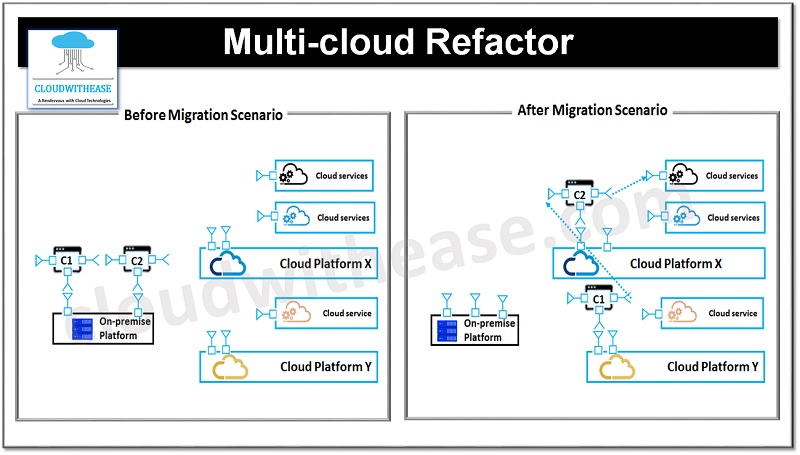Table of Contents
Multi-cloud offerings are available in the market and organizations want to take advantage of their flexibility and choose the one which fits best to them to reduce costs of software development. Multi cloud adoption is increasing at a rapid pace and more than 85% of organizations have invested in multi-cloud architecture in 2020.
The adoption of both public and private cloud is accelerated however working across different cloud platforms brings a whole lot of challenges as lack of understanding of fully cloud technology is the most basic question organizations are struggling with.
In this article we will learn about various architecture designs to build an effective cloud strategy, its advantages and disadvantages, use cases etc.
What is Multi-Cloud Architecture?
Multi Cloud strategy is ideally suited for specific scenarios where organizations are facing challenges such as users are not located near any data centres or they are widely distributed across geographies, regulations limits on storing data or data residency restrictions, use of public clouds with on premises resources, cloud-based applications are not resilient enough and loss of a single data centre can affect disaster recovery of application.
Multi-cloud Architecture Designs
Let’s discuss and understand more about Multi-cloud architecture designs.
Cloudification
The Application components are hosted on-premises in this architecture and post migration it can use different cloud services of other cloud platforms to enhance its performance. This architecture improves application availability. Re hosting in multiple cloud platforms helps in avoiding major risk of vendor lock-in. On the flip side it will decrease usability.

Multi-cloud Relocation
Application is re-hosted on cloud platform and makes use of other cloud services to enhance its capabilities. It improves availability and avoids vendor lock in risk and efficiency of re hosted components over cloud platform.

Multi-cloud Refactor
It offers better QoS , an on-premises application is re-architected for deployment on multiple cloud platforms. Application need for re-architecting addresses issues related to optimization. Parallel design enables better throughput across multi cloud platforms. It optimizes scalability and performance, leads to agility of application to respond to business and IT change.

Multi-cloud Rebinding
A re-architected application deployment is partially done on multiple cloud environments and hence enables the application to continue to function using secondary deployment when the primary system fails. This improves application resiliency, making unhealthy services healthy again, traffic can be delivered, maximizing system responsiveness.

Multi-Cloud Rebinding with Cloud Brokerage
A cloud brokerage service is deployed, which enables the application to continue to function in case of a failure with the primary platform. This ensures the optimal and secure functioning.

Multi-application Modernization
Various on premises applications are re-architected as a collection and deployed across cloud environments. It provides consistent information and rules for shared components, reduction in operational and maintenance costs for shared components is an added benefit via optimizations.

Conclusion
Applications market is taking a big leap with advancements and innovations. The choice of right cloud architecture design helps to leverage different containers and micro-services based architecture which would break single vendor lock-in in deployment of applications and services. Organizations can opt for multiple vendors to share workloads and establish an ecosystem of services.

